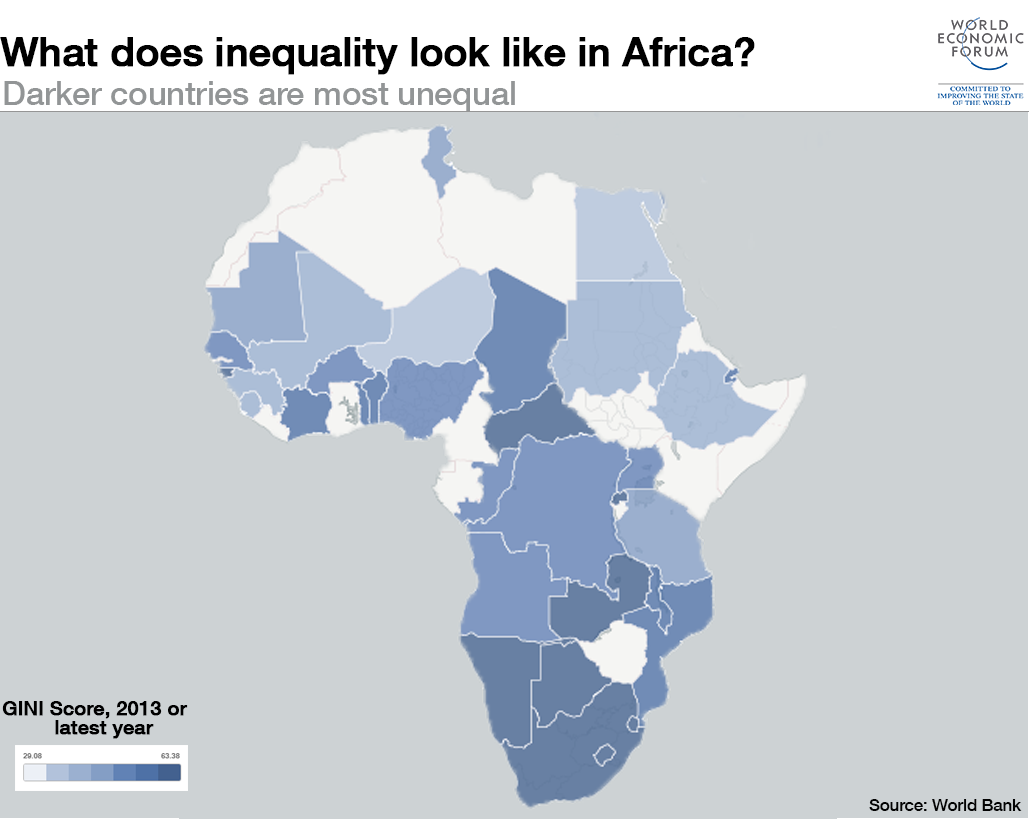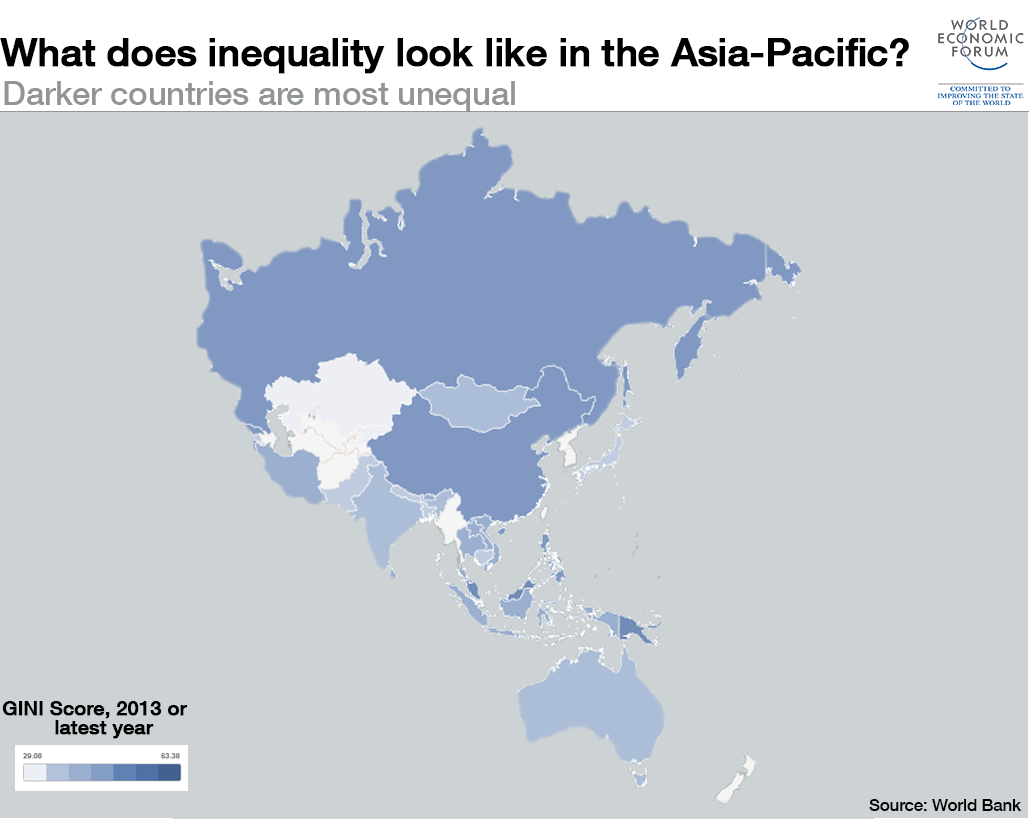5 maps on the state of global inequality

Stay up to date:
Economic Progress
Half of the world’s wealth is now owned by the top 1%, according to a recent Credit Suisse report.
The extent of global inequality represents a challenge to societies across the world, as governments and international organisations look to encourage inclusive and sustainable growth. The World Bank estimates inequality in countries around the world using the GINI index – a measurement of the extent to which income deviates from a perfectly equal distribution. On the scale, 0 represents perfect equality and 100 would represent total inequality. The following chart shows 2013, or nearest year, data.
The map presents an interesting picture of global inequality, with much of the globe returning high levels of inequality, including large parts of Asia, Africa and the Americas. By contrast, Europe, especially in the east and in Scandinavia, shows the lowest levels of inequality.
If we consider the Americas we see the lowest levels of inequality in Canada, with a GINI score of 33.68 – even this places it some way down the global list. For comparison, the USA scores 41.06 – placing it between Madagascar and Russia on the list. In South America, much of the continent returns high GINI scores, including scores in excess of 50 for Brazil, Colombia and Chile.
Eastern Europe and Scandinavia return low scores for GINI, with the Ukraine, Norway and Finland all among the top performing countries around the world. The general picture for Europe, especially when compared to the rest of the world, is overall lower levels of inequality, as well as fairly consistent levels across the continent.
There is a lack of data for Africa, compared to the rest of the world, but the map presents a picture of relatively high inequality. Three African nations return scores in excess of 60. However, some nations return relatively low scores, for example Niger and Ethiopia.
The situation in Asia is diverse, with some countries experiencing relatively high inequality, while others have much lower levels. Kyrgyzstan has a GINI score of 27.4, while at the other end of the scale the Philippines has a score in excess of 40.
To keep up with the Agenda subscribe to our weekly newsletter.
Author: Joe Myers is a Digital Content Producer at Formative Content.
Image: A general view of the low-income neighborhood known as Boca la Caja next to the business district in Panama City, September 17, 2013. REUTERS/Carlos Jasso
Don't miss any update on this topic
Create a free account and access your personalized content collection with our latest publications and analyses.
License and Republishing
World Economic Forum articles may be republished in accordance with the Creative Commons Attribution-NonCommercial-NoDerivatives 4.0 International Public License, and in accordance with our Terms of Use.
The views expressed in this article are those of the author alone and not the World Economic Forum.
Forum Stories newsletter
Bringing you weekly curated insights and analysis on the global issues that matter.
More on Economic GrowthSee all
Aaron Schumm
March 31, 2025
Alexis Crow
March 28, 2025
Katerina Labrousse and Rhea Hamilton
March 25, 2025
Kate Whiting
March 25, 2025
Julia Hakspiel and Laura V Natera
March 24, 2025



